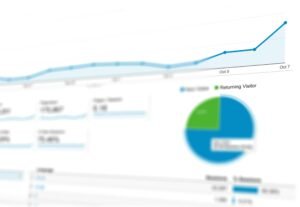Google Expands Travel Feeds in Search Ads, Enhancing Hotel Advertisers’ Reach
In a strategic move set to revolutionize travel advertising, Google has announced the expansion of its Travel Feeds feature in Search Ads, offering hotel advertisers the ability to showcase dynamic, real-time information, including prices, dates, ratings, and images. This latest update is now available to all hotel advertisers and seamlessly integrates into existing search ad campaigns, significantly enhancing the reach and engagement of travel-related advertisements.
Dynamic and Real-Time: A New Era for Travel Advertising
Travel Feeds in Search Ads represent a transformative advancement in how travel companies can market their offerings. By utilizing dynamic, feed-based information, advertisers can present valuable, real-time data directly to consumers, potentially increasing consumer engagement and boosting click-through rates. Anu Adegbola, Search Engine Land’s Paid Media Editor, highlights the significance of this update, stating, “The incorporation of comprehensive travel-related data not only enhances ad appeal but also significantly improves user experience by providing essential information at a glance.”
Existing advertisers will see these dynamic elements automatically appear in their ad campaigns, provided a travel feed is linked to Google Ads. For newcomers to the platform, setup is straightforward with options to opt out at both the account and campaign levels, ensuring flexibility and control over campaign content.
The real-time nature of Travel Feeds allows travelers to make informed decisions quicker, providing a richer browsing experience and aiding in narrowing down choices efficiently. Google’s claim of up to a 20% increase in click-through rates among advertisers utilizing the full range of Travel Feeds formats underscores the potential for significant returns.
Potential Broader Applications in the Travel Industry
Beyond hotels, Google is focusing on expanding this advertising format to encompass additional travel services, such as activities, car rentals, and events. By diversifying the range of services represented, Google aims to furnish consumers with a more holistic view of travel options while empowering advertisers with enhanced visibility.
Industry insiders are eager to see how this expansion will unfold. Jose Molina, a digital marketing specialist based in Austin, Texas, expressed optimistic anticipation: “This expansion could redefine how travel packages are advertised, ensuring a seamless experience for users and providing unparalleled detail about everything from hotel stays to car rentals and attractions.”
Implications for the Community
For local businesses in the United States, particularly those in the travel and hospitality industries, the expansion of Google’s Travel Feeds feature has substantial implications. Companies can expect increased engagement due to richer ad content and a broader reach. Local hotel owners and travel service providers stand to benefit from this enhanced visibility, potentially seeing a rise in bookings and client interest. Additionally, the updates align with the industry’s growing reliance on AI tools and SEO to deliver personalized, relevant advertising content to potential customers.
The improvements in advertising performance through detailed data presentations in ads are particularly significant for community members who rely on tourism. Areas heavily focused on tourism may see economic boosts as travel becomes more accessible and streamlined.
A Balanced Perspective
Despite the evident advantages, this expansion is not without its challenges. Concerns have been raised about how smaller businesses can compete with larger chains that might have more extensive resources to leverage the new ad features. However, Google’s provision of straightforward setup processes and flexible opt-out options can empower businesses of all sizes to engage with these tools.
Some skeptics urge caution, pointing out potential privacy issues with the real-time sharing of data. Ensuring consumer data protection remains a priority, proposes Dr. Amelia Vega, a tech policy analyst: “Balancing dynamic advertising with consumer privacy is crucial. Ad platforms must continue strengthening privacy measures to maintain public trust.”
Related Developments in Google’s Ad Strategy
The news of this expansion follows other significant updates from Google, including plans to pause US election ads after polls close and adjustments in ad auction dynamics for holiday periods. Additionally, Google Ads has introduced page-specific assets for Performance Max and revamped the Google Search interface by removing the Sitelinks Search Box. These changes highlight Google’s strategy to refine its advertising ecosystem continuously, offering tailored solutions that meet evolving market needs.
Looking Ahead
As Google continues exploring the boundaries of ad technology, the focus on innovative features like Travel Feeds signals a broader commitment to enhancing digital advertising experiences. The integration of comprehensive data within ads not only elevates user engagement but also marks an evolution in the landscape of search advertising, with potential long-term benefits for both advertisers and consumers.
Community members are encouraged to stay informed about these changes, exploring how they might capitalize on the new opportunities presented by the expansion of the Travel Feeds feature in Search Ads. Interested advertisers can find more information on setup procedures and enhancements directly from Google’s support pages or by attending upcoming webinars on digital ad strategies.
In conclusion, the expansion of Travel Feeds within Google Search Ads illustrates a forward-thinking approach to travel advertising, fostering a deeper connection between advertisers and their target audience. As this initiative unfolds, it has the potential to transform digital marketing strategies sector-wide, fostering growth, engagement, and user satisfaction in equal measure.




